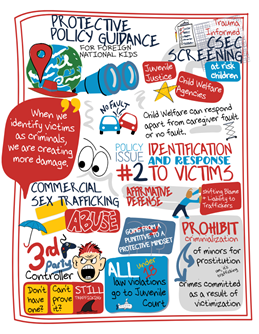Advanced Legislative Framework: Issue Area #2 (Identification and Response to Victims) and Issue Area #3 (Continuum of Care)
This fall, we will release state Report Cards based on our Advanced Legislative Framework, pushing states towards a victim-centered response to child and youth sex trafficking.
The framework is based on six issue areas that review state’s policies in addressing this injustice. Last month, we reviewed issue area one—Criminal Provisions.
This month, we want to highlight two issue areas aimed at supporting victims of child sex trafficking and ending the cycle of exploitation—Identification of and Response to Victims and Continuum of Care.

Issue area #2 focuses on the importance of proper identification and response to victims of child and youth sex trafficking. All too often, child sex trafficking victims are misidentified as offenders and are directed into systems where their exploitation and trauma is overlooked. It is vital that all commercially sexually exploited children and youth are recognized as victims of trafficking and receive a protective, not punitive response from child serving systems and law enforcement so they receive appropriate care. This is true even if a third party controller wasn’t involved.
What is a third party controller? A third party controller is someone who is managing the exchange of sex with the child and the buyer, otherwise known as the trafficker. In some cases of sex trafficking, there isn’t a third party controller, but a buyer directly exploiting a child who is in need of money, a safe place to stay, or is exploiting other vulnerabilities of the victim. That buyer scenario is still considered child sex trafficking.
Not only are victims misidentified, but many are treated as perpetrators of crimes. Victims of child sex trafficking may commit offenses in response to their own status as a victim, which should be acknowledged when they interact with law enforcement and welfare agencies. This includes ending the criminalization of children and youth for prostitution. Under federal law, any child involved with commercial sex is a victim of sex trafficking, but some states still penalize minors for this crime. When their status as a victim is ignored, they are further traumatized by the punishments they receive, prolonging their healing process and denying access to vital services and legal defenses.
To further help prevent or accurately identify sex trafficking, issue area #2 calls for increased trauma-informed screening of vulnerable children and youth in the child welfare and juvenile justice systems. With increased screening, policies must also be put in place to ensure that these systems are able to respond with appropriate services.
With proper identification and movement away from punitive responses to victimization, we lean into our third issue area.
 Issue area #3, Continuum of Care, addresses the need of more services for victims of child and youth sex trafficking and vulnerable populations.
Issue area #3, Continuum of Care, addresses the need of more services for victims of child and youth sex trafficking and vulnerable populations.
It is essential that the specialized services victims receive are through non-punitive means to avoid further traumatization or re-exploitation. This can be achieved through a coordinated effort amongst law enforcement, service providers, and other advocates by establishing state-wide multi-disciplinary teams working together to create a victim-centered response to child sex trafficking.
The continuation of care should also extend to youth between 18 and 24 years old. This age group is additionally vulnerable to sex trafficking because of the lack of services available to them as they transition out of child welfare programs and lose the support systems they previously had. Services should continue to support youth in this age range as they cross the bridge from adolescence to adulthood.
To reach these vital goals, it is imperative to appropriate state funding towards supporting agencies and services providing essential support to vulnerable children and victims. Funding continues to be one of the largest hurdles in providing support to victims, but by prioritizing child serving agencies, vulnerable children and victims will receive the care and protection they need.
With legislation in place that focuses on these issue areas, vital protections for child and youth victims of sex trafficking will be expanded, leading to a more trauma-informed response.
What do to next
- Sign up to become a Grassroots Hero and receive monthly newsletters focused on policy initiatives, legislative wins, and urgent calls-to-action to help victims.
- Contact your state and federal legislators about important bills or issues related to sex trafficking on our Advocacy Action Center.
- Share this blog on social media so others can learn more about how Shared Hope is taking action against child and youth sex trafficking across the United States!
- Sign up to receive the Report Cards for Child & Youth Sex Trafficking to be the first to know when your state’s grade is released!






